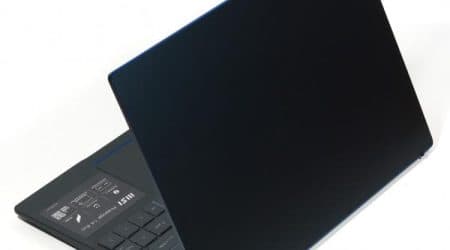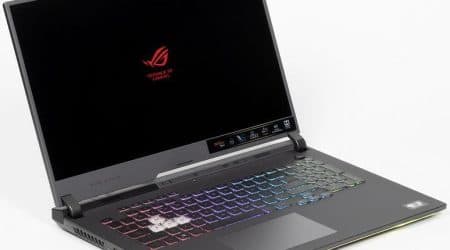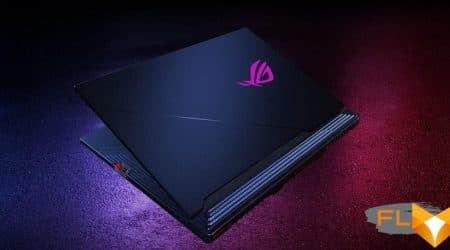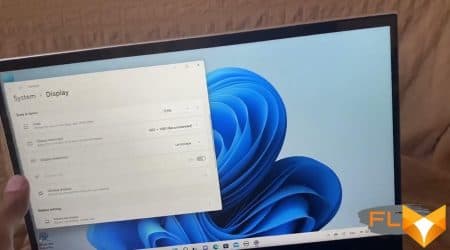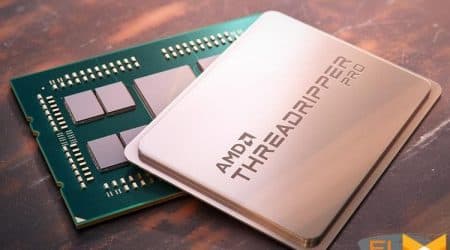In the realm of digital creativity, the tools we choose can significantly influence our experience and outcomes. With advancements in technology, the evolution of writing instruments designed for touch-sensitive screens has introduced a variety of features and functionalities. This exploration delves into the distinct models available in the market, assessing how enhancements in design and usability cater to the needs of artists, designers, and everyday users alike.
The advancements in these writing tools range from improved grip and ergonomics to better compatibility with various devices. As we analyze the features of these two iterations, it’s essential to consider how these enhancements affect overall performance and user interaction. Understanding these facets will empower users to make informed choices that best fit their creative workflows.
Whether you are a seasoned professional or a newcomer eager to explore the digital canvas, discerning the nuances between these models can elevate your approach to artistic expression. Join us as we dissect the key characteristics that set these stylus versions apart and help you navigate the landscape of digital artistry with confidence.
Overview of Apple Pencil Generations
The evolution of the notable writing instrument reflects advancements in technology and user experience. Each iteration introduces enhancements that cater to the diverse needs of creators, professionals, and students alike. This section provides a comprehensive look at these developments and what they bring to the table.
The first version was released with essential features to enable users to interact more naturally with their devices. Key aspects that were introduced include:
- Basic pressure sensitivity
- Increased accuracy for note-taking and drawing
- Compatibility with initial tablet models
With the second version, significant upgrades were made to improve functionality and convenience. Users benefited from:
- Enhanced responsiveness and precision
- Magnetic attachment for easy storage and charging
- Double-tap functionality for quick access to alternate tools
Recent advancements have led to the introduction of a model that supports modern connectivity options. This latest tool features:
- Faster charging and streamlined connections
- Improved compatibility with a wider range of devices
- Additional customization choices for users
These iterations showcase a commitment to refining the user experience and ensuring creators have the tools they need to express their vision effectively.
Design Changes Between Generations
The evolution of this drawing tool has seen significant alterations in its aesthetic and functional aspects, enhancing user experience and ergonomics. Each iteration has introduced distinctive features that cater to the needs of artists and professionals alike.
First Generation showcases a cylindrical body with a glossy finish, resembling a traditional writing instrument. Its design emphasizes simplicity and ease of use, making it accessible for various applications.
In contrast, the Second Generation presents a more modern appearance, with a flat edge that enables magnetic attachment to compatible devices. This innovative feature not only enhances portability but also introduces a sleek, minimalist aesthetic that appeals to contemporary users.
Moreover, the Second Generation incorporates a textured surface, providing improved grip and control during use. This practical enhancement reflects an understanding of users’ needs for comfort, particularly during extended sessions of creative work.
Overall, the design transformations highlight a focus on functionality, practicality, and visual appeal, marking a significant shift from a conventional tool to a sophisticated accessory that complements modern technology.
Compatibility with Apple Devices
Understanding the compatibility of various stylus models with different devices is essential for users who wish to enhance their digital experience. Each version offers unique features and works with specific tablets and smartphones, impacting user choice based on their existing technology.
Supported Devices
Each variation of the stylus is designed to work seamlessly with specific models of tablets and smartphones. Below is a breakdown of which stylus works with which devices:
| Stylus Model | Compatible Devices |
|---|---|
| First Generation | iPad (6th and 7th Gen), iPad Air (3rd Gen), iPad Pro (9.7-inch and 12.9-inch, 1st Gen) |
| Second Generation | iPad Pro (11-inch, 1st and 2nd Gen), iPad Pro (12.9-inch, 3rd and 4th Gen) |
| Latest Version | iPad (10th Gen), iPad Air (5th Gen), iPad Pro (all models with USB-C ports) |
Connection Types
Another crucial aspect of compatibility lies in the connection methods utilized by each stylus. While earlier models utilized a lightning connector, the most recent stylus has embraced a more modern approach, allowing for a different, more efficient interface.
Charging Mechanisms Explained
Understanding the various methods of powering up these advanced tools is essential for users who wish to maximize their experience. Each iteration introduces distinct approaches to recharging, reflecting advancements in technology and user convenience.
The first model features a unique charging style where the device connects directly to the tablet’s port. This method, while innovative, can lead to challenges such as potential wear on the connector and inconvenience during use.
In contrast, the second version utilizes a more sophisticated attachment system. It adheres magnetically to the side of the tablet, not only simplifying the recharging process but also enhancing portability and reducing the risk of loss.
With the latest iteration, a shift towards a universal standard allows for more versatility in charging options. Users can enjoy the flexibility of utilizing common cables, aligning with contemporary trends towards streamlined and efficient technology.
Each approach brings its own set of advantages and considerations, prompting users to choose based on their personal preferences and usage habits. An informed decision regarding these powering methods can significantly enhance the overall usability and functionality of the tools in question.
Performance and Latency Differences
When exploring the various iterations of this innovative drawing tool, one key aspect to consider is how performance metrics and response times have evolved. Users often seek a seamless and fluid experience during their creative processes, which greatly depends on the technology used in these devices. The differences in responsiveness can significantly impact the usability and overall satisfaction of individuals engaged in meticulous tasks such as sketching, designing, or annotating.
Responsiveness Metrics
The advancement in technology has led to noticeable improvements in responsiveness across the various versions. Enhanced sensors and improved communication protocols can create a more natural interaction between the user and the screen, allowing for greater precision in each stroke.
Latency Comparison
| Model | Latency (ms) | Pressure Sensitivity Levels |
|---|---|---|
| First Iteration | 20-25 | 2048 |
| Second Iteration | 9-14 | 4096 |
As demonstrated in the table, the innovations in the newer models lead to a marked improvement in latency. The reduced response time allows artists and professionals to execute a wider range of techniques without experiencing delay, ultimately enriching the user experience. Coupled with heightened pressure sensitivity, users can enjoy more nuanced control over their creations.
USB-C Integration and Its Impact
The recent incorporation of a versatile connector has significantly transformed the way digital devices interact and communicate with accessories. This shift not only enhances charging speeds but also improves data transfer capabilities, resulting in a more efficient workflow for users. With the latest advancements, compatibility across various gadgets is more feasible than ever, allowing for a seamless experience.
One of the most noticeable effects of this integration is the elimination of numerous cables and adapters that consumers previously had to manage. This transition towards a universal connector promotes convenience and fosters an eco-friendly approach by reducing electronic waste.
| Feature | Impact |
|---|---|
| Charging Speed | Faster charging times enhance productivity and reduce downtime. |
| Data Transfer | Improved data transfer rates facilitate quicker file sharing and backup processes. |
| Device Compatibility | Wider compatibility allows for diverse devices to connect with ease. |
| Eco-Friendliness | Reduction in disposable accessories leads to a lower environmental footprint. |
Overall, the adoption of this universal connector represents a significant evolution in user interface design, aligning technological advancements with consumer needs for efficiency and sustainability.
Q&A: Apple pencil gen 1 vs gen 2 vs usb c whats the difference
How does the new Apple Pencil with USB-C compare to the Apple Pencil 2?
The new Apple Pencil with USB-C offers an affordable option compared to the Apple Pencil 2, featuring a matte finish and USB-C charging. While it lacks some of the advanced features found in the Apple Pencil 2, such as the hover feature and wireless charging, it is compatible with the latest iPad models, including the 10th generation iPad. The Apple Pencil 2, on the other hand, supports wireless charging, tilt sensitivity, and low latency, making it ideal for professional use on compatible iPads like the iPad Pro.
What makes the Apple Pencil 2 better suited for professional use than the Apple Pencil with USB-C?
The Apple Pencil 2 is better suited for professional use due to features like wireless charging, the hover function, and improved tilt sensitivity, which make it more responsive and precise. Unlike the USB-C model, which charges via a USB-C cable, the Apple Pencil 2 attaches magnetically to the side of the iPad for easy charging. Additionally, it offers low latency and better integration with iPads that support advanced features, such as the iPad Pro and iPad Air.
How does the Apple Pencil 1st generation differ from the Apple Pencil 2 and the new USB-C model?
The Apple Pencil 1st generation charges through a Lightning port and lacks wireless charging or advanced features like the hover function. In contrast, the Apple Pencil 2 offers wireless charging, tilt sensitivity, and low latency, while the new USB-C model introduces USB-C charging but with fewer features than the 2nd generation. Each Apple Pencil model is designed for specific iPad models, with the 1st generation working with older iPads, the 2nd generation for iPad Pro and Air, and the USB-C version for newer iPads like the 10th generation.
What are the key differences between the Apple Pencil 2 and the Apple Pencil Pro, if released?
If the Apple Pencil Pro is released, it may feature additional enhancements over the Apple Pencil 2, such as more precise pressure sensitivity, customizable buttons, or a higher price tag. Currently, the Apple Pencil 2 is the most advanced model, offering features like wireless charging, low latency, and tilt sensitivity. The Apple Pencil Pro could potentially add more pro-level tools and features for creative professionals, further setting it apart from the more affordable Apple Pencil USB-C and 1st generation models.
How does the Apple Pencil 2 vs Apple Pencil USB-C compare in terms of charging and features?
The Apple Pencil 2 charges wirelessly when attached to the side of a compatible iPad, while the Apple Pencil USB-C uses a USB-C charging port. The Apple Pencil 2 offers advanced features such as tilt sensitivity, low latency, and the hover feature, making it ideal for professional use. In contrast, the USB-C model is more affordable at $79 and focuses on essential functionality without the advanced features of the second-gen Apple Pencil. Both models support the latest iPads, but the Apple Pencil 2 is better suited for users needing pro-level tools.
What are the key differences between the Apple Pencil 1 vs Apple Pencil 2?
The Apple Pencil 1 charges through a Lightning port and lacks the wireless charging capability of the Apple Pencil 2. Additionally, the Apple Pencil 2 offers improved tilt sensitivity, low latency, and a matte finish, making it easier to handle and more responsive than the first-gen Apple Pencil. While both work well with iPads, the Apple Pencil 1 is compatible with older iPad models, whereas the second-gen Apple Pencil works with more recent models like the iPad Pro and iPad Air.
How does the pricing of the Apple Pencil 2 vs Apple Pencil USB-C compare in 2024?
In 2024, the Apple Pencil 2 is priced at $129, while the USB-C version is more budget-friendly at $79. The Apple Pencil 2 justifies its higher price with advanced features like wireless charging, low latency, and tilt sensitivity. The USB-C model is a more affordable alternative, providing basic functionality for newer iPads with USB-C ports but lacking the pro-level features of the second-gen Apple Pencil. Both offer great value depending on user needs.
Which Apple Pencil is the best for the iPad Mini in 2024?
For the iPad Mini, the best Apple Pencil depends on the iPad Mini’s generation. The Apple Pencil 1 is compatible with earlier models of the iPad Mini, while the Apple Pencil 2 works with newer models that support wireless charging. If your iPad Mini supports the second-gen Apple Pencil, it would be the better choice due to its improved features like tilt sensitivity, low latency, and wireless charging. For older models, the first-gen Apple Pencil is still a good option for basic drawing and note-taking.
